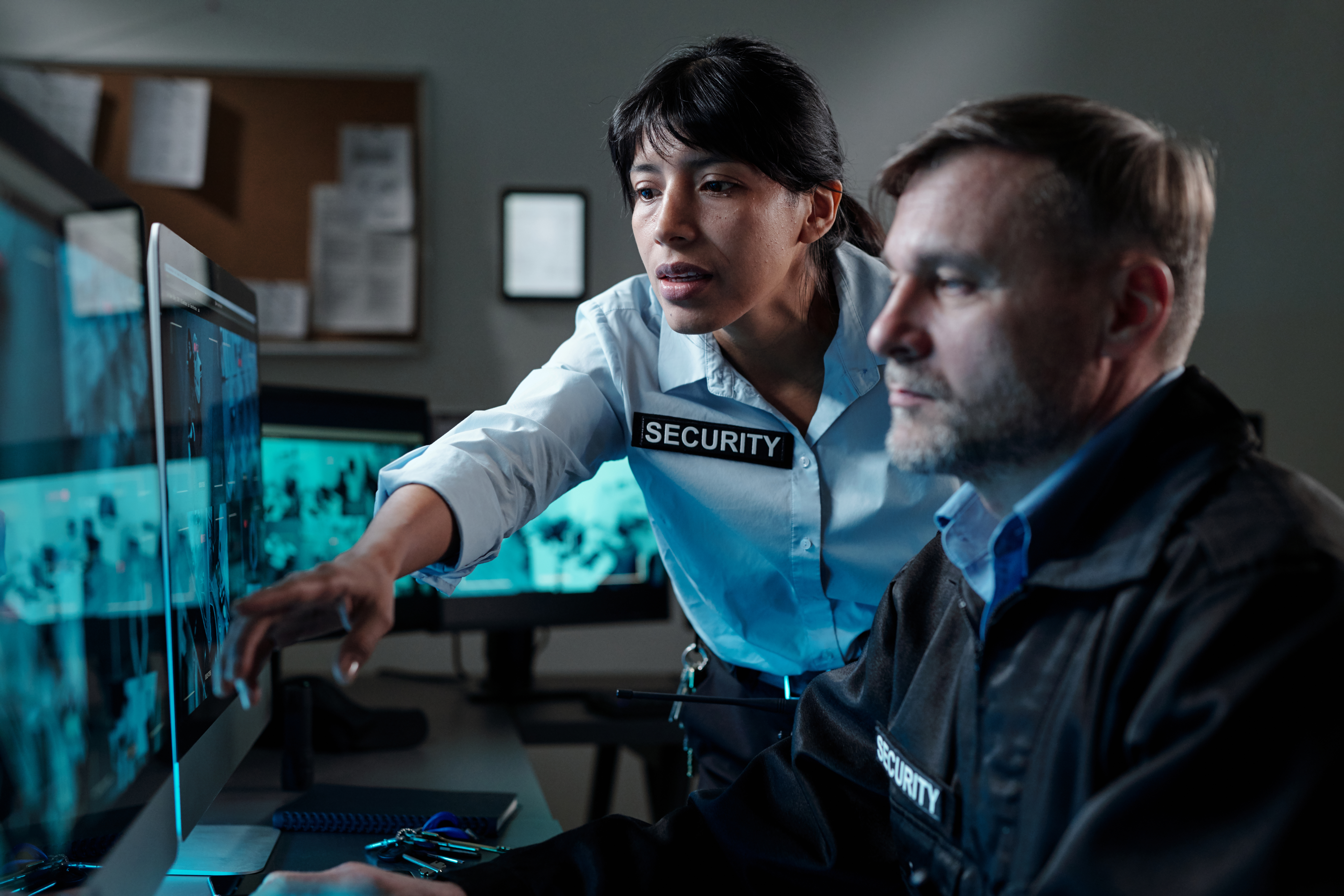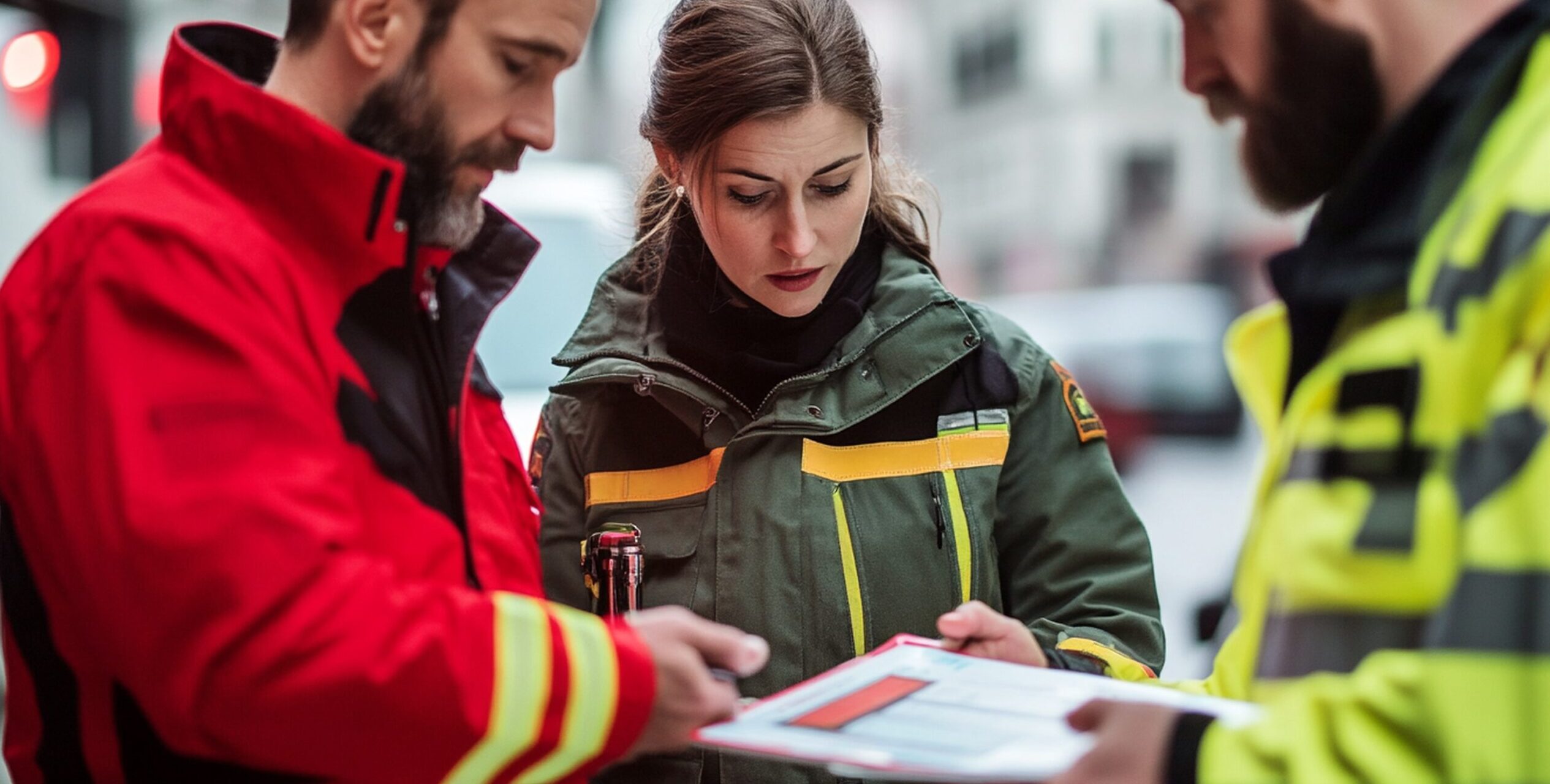Security planning in Canada is no longer just about theft or trespassing. Businesses today face a much broader range of risks—from climate disasters to social unrest.
Wildfires in British Columbia, flooding in Quebec, ice storms across the Prairies, and events like the 2022 Ottawa trucker blockade have proven that unexpected disruptions can halt operations and put people at risk.
Unfortunately, most companies still rely on outdated, traditional security plans. This article explores the emerging risks Canadian businesses must address and outlines how security providers should adapt to mitigate them effectively.
Why Traditional Security Measures Fall Short
Most businesses have a checklist for security:
- CCTV cameras
- Access control systems
- On-site guard presence
These measures are still important, but they are designed for predictable risks—break-ins, vandalism, shoplifting.
They do little to protect against:
- Climate emergencies such as floods, wildfires, or ice storms.
- Civil unrest where protests or blockades disrupt operations.
- Infrastructure interruptions that ripple through supply chains.
In today’s environment, security must expand from guarding property to ensuring business continuity and resilience.
Climate Risks Canadian Businesses Must Address
Canada’s geography and climate create unique challenges for businesses:
- Wildfires (BC, Alberta, Northern Ontario)
- Force evacuations, leave sites abandoned, and create smoke/air risks.
- Security impact: monitoring vacant properties, securing access points, and assisting emergency responders.
- Force evacuations, leave sites abandoned, and create smoke/air risks.
- Flooding (Quebec, Ontario, Atlantic provinces)
- Destroys retail inventory, damages warehouses, and halts operations.
- Security impact: maintaining site safety when alarms fail, safeguarding assets during downtime.
- Destroys retail inventory, damages warehouses, and halts operations.
- Snowstorms & Ice Events (Prairies, Northern Canada)
- Isolate staff, disrupt trucking/logistics, and delay construction.
- Security impact: mobile patrols for isolated facilities, staff protection, and emergency site monitoring.
- Isolate staff, disrupt trucking/logistics, and delay construction.
Key Point: Canadian businesses can’t treat climate disasters as rare events—they must be integrated into everyday security planning.
Civil Unrest and Social Disruptions
Canada’s social landscape has shifted. Events once considered rare are now part of the business reality:
- Ottawa Trucker Convoy (2022): Downtown businesses saw weeks of blocked access and increased vandalism risks.
- Pipeline & Indigenous Rights Protests: Logistics, construction, and infrastructure projects faced costly delays.
- Urban Demonstrations: In Vancouver, Toronto, and Montreal, protests have disrupted retail, commercial operations, and employee safety.
Security considerations include:
- Controlled building access during disruptions.
- Staff and customer protection protocols.
- Mobile patrols and monitoring to detect escalating threats.
- Liaison with local law enforcement when unrest continues.
What Security Providers Should Do to Mitigate These Risks
This is where many guard companies fall short—they focus on static guarding but ignore larger resilience measures. A forward-thinking provider should deliver the following:
1. Emergency Preparedness Integration
- Conduct tabletop drills with clients (wildfires, floods, protests).
- Train guards in first aid, CPR, and fire response.
- Align security teams with the client’s business continuity plan.
2. Environmental & Facility Risk Monitoring
- Equip guards with weather/emergency alert apps linked to Environment Canada.
- Pre-storm site securing: locking hazardous areas, boarding windows, securing loose assets.
- Post-disaster patrols: checking for leaks, breaches, or unsafe areas when sites are abandoned.
3. Civil Unrest Readiness
- Access control protocols to protect staff inside facilities.
- De-escalation training to manage tense situations without violence.
- Coordination with law enforcement during extended unrest.
4. Technology Deployment
- Remote surveillance towers and drones for large or high-risk areas.
- Central monitoring hubs to coordinate site responses.
- NFC or QR tracking systems for staff accountability during evacuations.
5. Industry-Specific Measures
- Construction sites: Secure equipment and materials during shutdowns.
- Warehousing & logistics: Guards manage rerouted deliveries during disruptions.
- Retail & shopping malls: Guard teams focus on customer safety and evacuation readiness.
- Healthcare: Guards help enforce lockdowns, crowd control, and emergency protocols.
6. Communication & Reporting
- Real-time incident reporting via mobile apps with photos and timestamps.
- Centralized coordination across multiple client sites.
- Post-incident reviews: clear reports on what worked and what needs improvement.
In short: A modern security company must provide training, technology, and crisis planning—not just a uniformed presence.
How LiveSecure Leads in Risk-Ready Security
Most security companies still rely on static guarding and basic surveillance. At LiveSecure, we go further by integrating people, process, and technology to ensure businesses are protected against both everyday risks and large-scale disruptions.
Here’s how we stand apart:
- Emergency-Ready Guards
Our teams are trained in first aid, fire response, and crisis management—ready to support evacuations, crowd safety, and on-the-ground coordination with emergency services. - Proactive Climate & Facility Risk Monitoring
LiveSecure patrols include environmental checks, pre-storm securing of assets, and post-disaster inspections. We don’t just guard sites—we help prepare them for the unexpected. - Civil Unrest Readiness
Our guards are trained in access control and conflict de-escalation, ensuring staff and customer safety during protests or disruptions. We also coordinate directly with law enforcement when needed. - Technology-Driven Solutions
With NFC/barcode systems for roll calls, AI-enabled surveillance, and mobile patrol reports sent in real time, by ensuring visibility and accountability when clients need it most. - Industry-Specific Expertise
From construction sites vulnerable to theft during shutdowns to healthcare facilities that must stay operational during emergencies, we tailor solutions to each sector. - Transparent Communication
Clients receive live updates through digital reporting, plus post-incident reviews that identify what worked and what can be improved for future resilience.
By combining these measures, We not only protect property—we safeguard people, assets, and business continuity in the face of climate risks, civil unrest, and unexpected disruptions.
Conclusion
Wildfires, floods, ice storms, and protests are not theoretical risks they are part of the Canadian business environment today. Security providers that focus only on break-ins are leaving their clients exposed.
To truly protect operations, businesses must demand emergency readiness, crisis-trained guards, advanced technology, and integration into continuity planning.
The question is simple: Is your security provider preparing you for the unexpected—or leaving you vulnerable?
Book a Free Security Audit with LiveSecure and ensure your business is resilient against Canada’s evolving threats.



